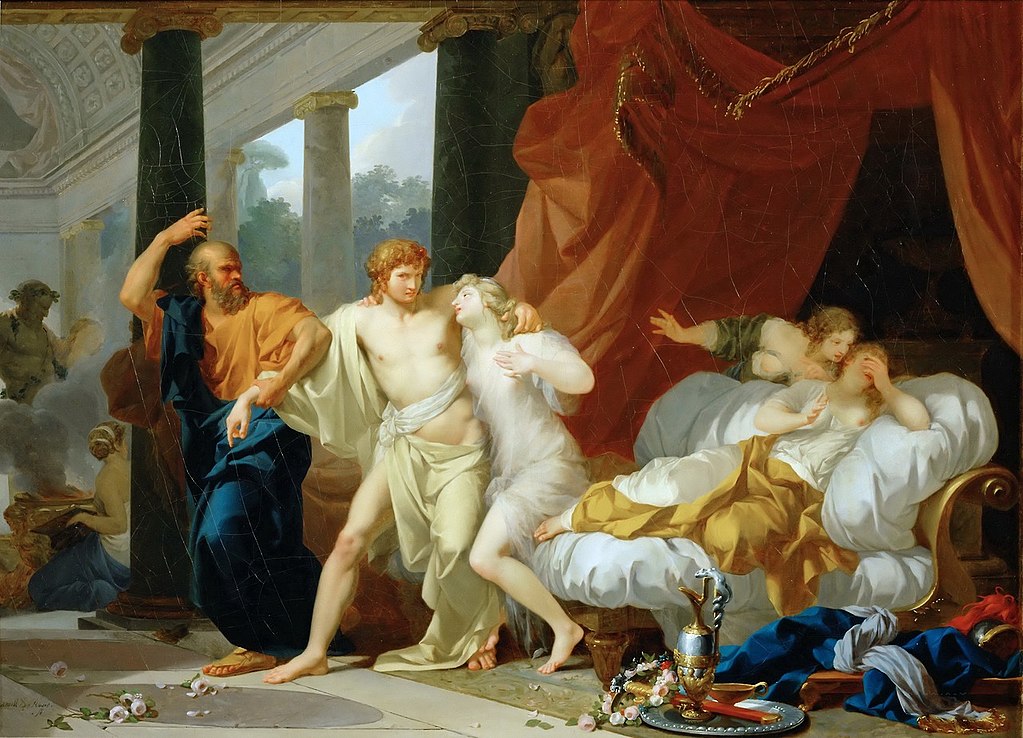Socrates and the Beautiful Girl
What is the Beautiful? In Plato’s Hippias Major, Socrates and the sophist Hippias set out to answer this question. Along the way, they evaluate such answers as ‘the appropriate’, ‘the beneficial’, ‘gold’, and even ‘burying your parents’. First, however, they evaluate Hippias’s proposal that the Beautiful is a beautiful girl.
Readers of Plato’s dialogues will know that this is not the kind of answer Socrates is looking for: Hippias is naming a beautiful particular instead of supplying a definition for ‘the Beautiful’. Moreover, as I argue in ‘The Beautiful Girl: An Erotic Reading of Socrates’ First Argument in Plato’s Hippias Major’, even if Socrates were asking Hippias to name a beautiful particular, he wouldn’t be happy with Hippias’s charged choice of particular. Throughout the Platonic corpus, Socrates indicates that he finds boys to be beautiful, but he never says the same about girls. While beautiful boys and beautiful girls are both objects of unhealthy lust, lust for a beautiful boy can at least be redirected up the Symposium’s scala amoris towards the Beautiful itself. By contrast, a man who lusts only after beautiful girls can never ‘give birth to true virtue’.

How, then, should Socrates respond to Hippias? I suggest that since he cannot elevate the conversation, he debases it. He takes seriously Hippias’s proposal that the Beautiful is a beautiful girl, considering the possibility that the beautiful girl might be a paradigm for other beautiful things—that is, that other beautiful things are beautiful because they somehow resemble a beautiful girl. But since the beautiful girl is deemed beautiful insofar as she is an object of sexual desire, the candidates for things that are beautiful because they resemble her will be things that pick up on her eroticism.
So, Socrates proceeds to ask Hippias whether mares, lyres, and pots are beautiful. Mares, lyres, and pots, I demonstrate, are all regularly used in Attic comedy as metaphorical obscenities for sexualized women. They are, then, the sorts of things that will be deemed beautiful if the beautiful girl is our paradigm for beauty: like the girl, they are ridden, plucked, and fired for the production of ‘soup’. Hippias is willing to grant that mares and lyres are beautiful, but the idea that common pots are beautiful is too absurd, even for him.
Horrified by Socrates’ smuttiness, he exclaims that pots are ‘not worth judging beautiful, compared to a horse and a girl and all the other beautiful things’. With this, Hippias falls squarely into Socrates’ trap. Just as monkeys are foul in comparison to men, so pots are foul in comparison to girls, Socrates reasons, but aren’t both men and girls foul in comparison to gods? The girl is not strictly beautiful, and so she cannot be the paradigm for beautiful things: she cannot be the Beautiful. With raucous comedic language, Socrates has successfully refuted Hippias’s proposal and exposed the sophist as a lecherous fool.
Solveig Lucia Gold is a PhD candidate in Classics at the University of Cambridge. Her new open access article – ‘The Beautiful Girl: an Erotic Reading of Socrates’ First Argument in Plato’s Hippias Major‘ – is out now in Cambridge journal The Classical Quarterly.







Why see obscenity in everything? In my opinion, the degree of decline is here: a horse is a noble animal, which is aesthetic by definition, a lyre is an everyday object, but associated with aesthetics, a pot is an everyday object, not in any way connected with aesthetics